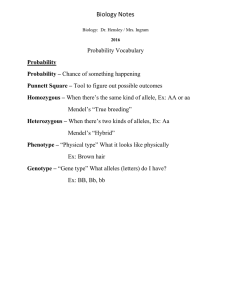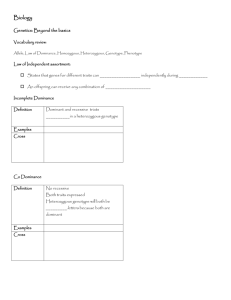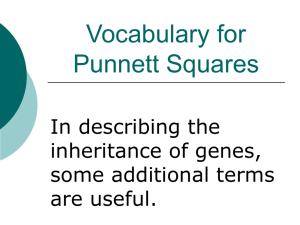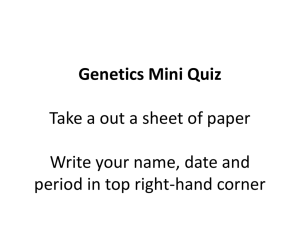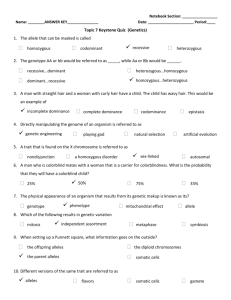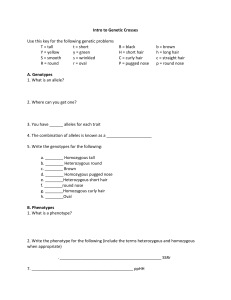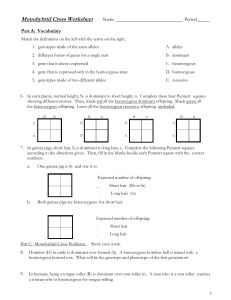File - layfieldsci.com
advertisement
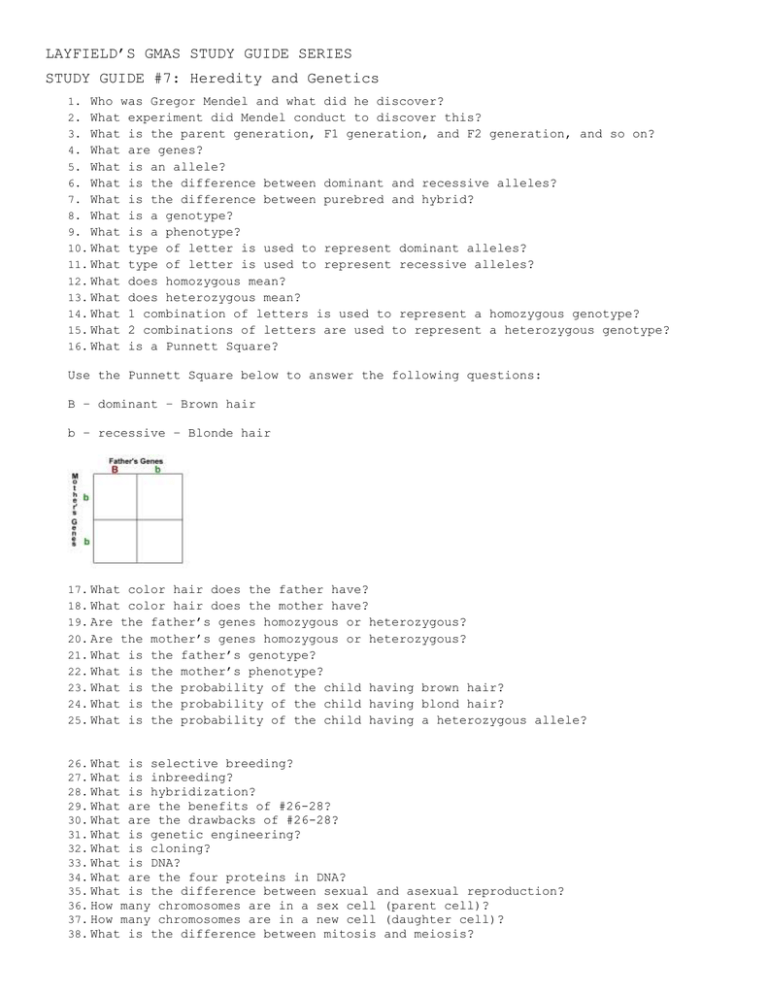
LAYFIELD’S GMAS STUDY GUIDE SERIES STUDY GUIDE #7: Heredity and Genetics 1. Who was Gregor Mendel and what did he discover? 2. What experiment did Mendel conduct to discover this? 3. What is the parent generation, F1 generation, and F2 generation, and so on? 4. What are genes? 5. What is an allele? 6. What is the difference between dominant and recessive alleles? 7. What is the difference between purebred and hybrid? 8. What is a genotype? 9. What is a phenotype? 10. What type of letter is used to represent dominant alleles? 11. What type of letter is used to represent recessive alleles? 12. What does homozygous mean? 13. What does heterozygous mean? 14. What 1 combination of letters is used to represent a homozygous genotype? 15. What 2 combinations of letters are used to represent a heterozygous genotype? 16. What is a Punnett Square? Use the Punnett Square below to answer the following questions: B – dominant – Brown hair b – recessive – Blonde hair 17. What color hair does the father have? 18. What color hair does the mother have? 19. Are the father’s genes homozygous or heterozygous? 20. Are the mother’s genes homozygous or heterozygous? 21. What is the father’s genotype? 22. What is the mother’s phenotype? 23. What is the probability of the child having brown hair? 24. What is the probability of the child having blond hair? 25. What is the probability of the child having a heterozygous allele? 26. What is selective breeding? 27. What is inbreeding? 28. What is hybridization? 29. What are the benefits of #26-28? 30. What are the drawbacks of #26-28? 31. What is genetic engineering? 32. What is cloning? 33. What is DNA? 34. What are the four proteins in DNA? 35. What is the difference between sexual and asexual reproduction? 36. How many chromosomes are in a sex cell (parent cell)? 37. How many chromosomes are in a new cell (daughter cell)? 38. What is the difference between mitosis and meiosis? 39. What is binary fission?
